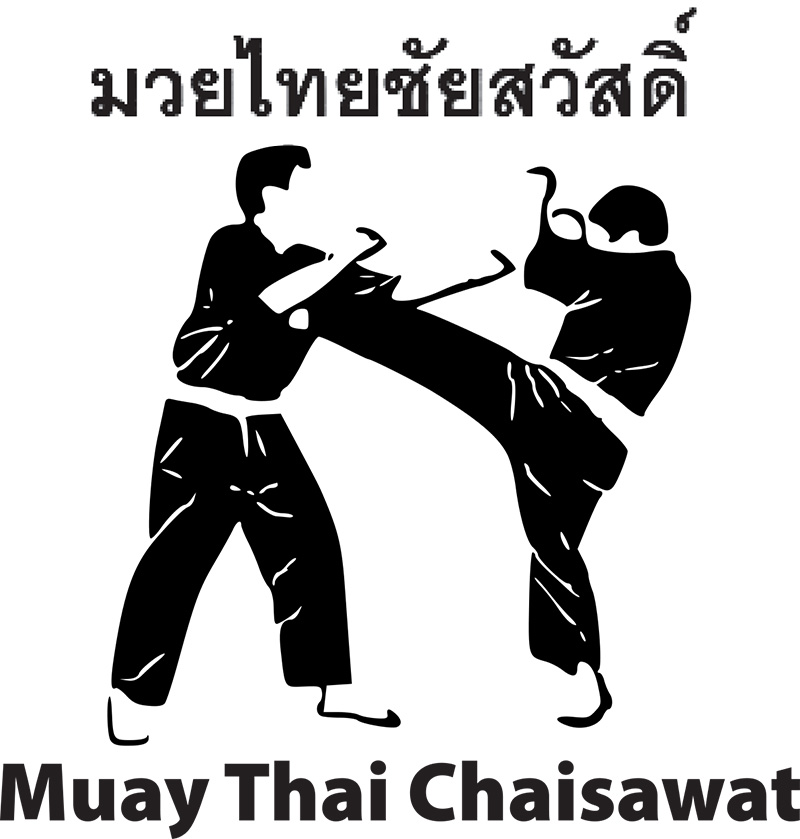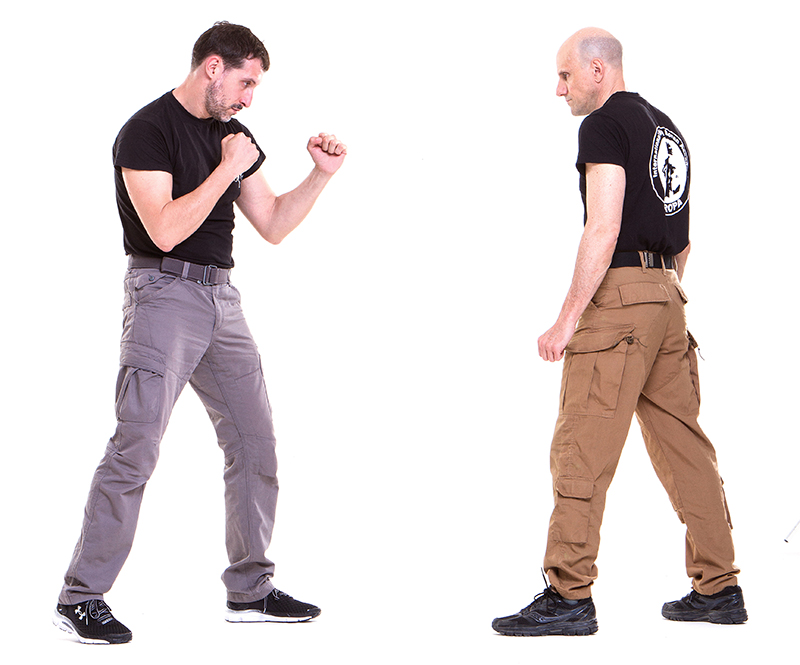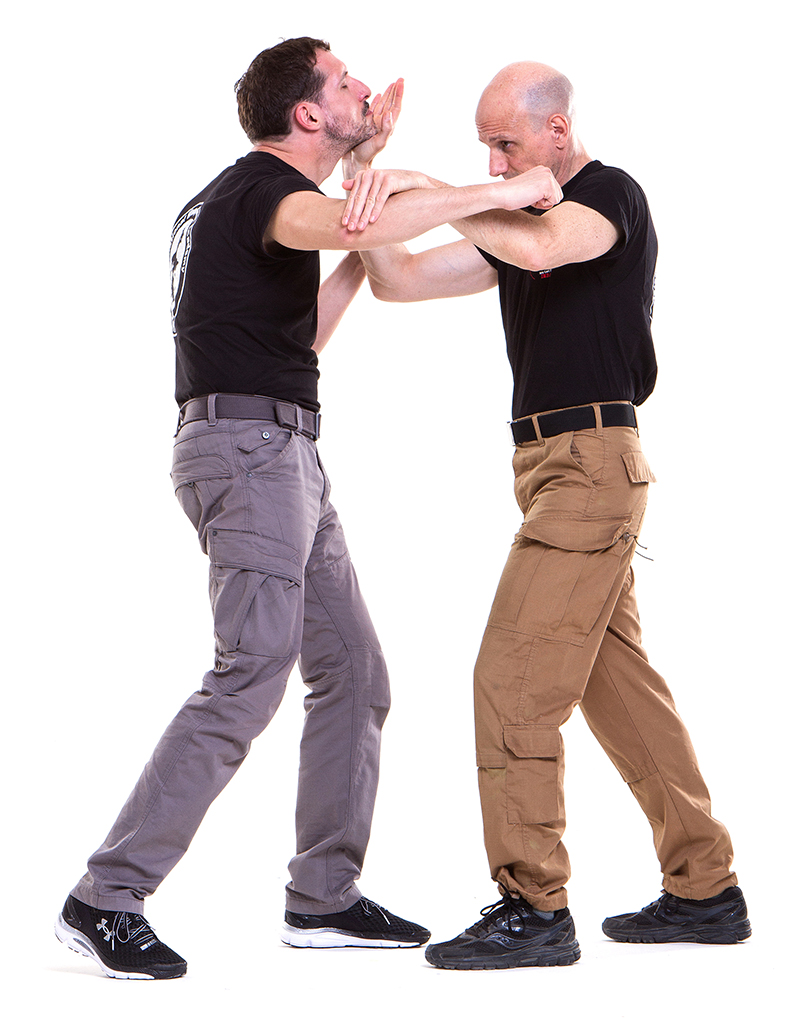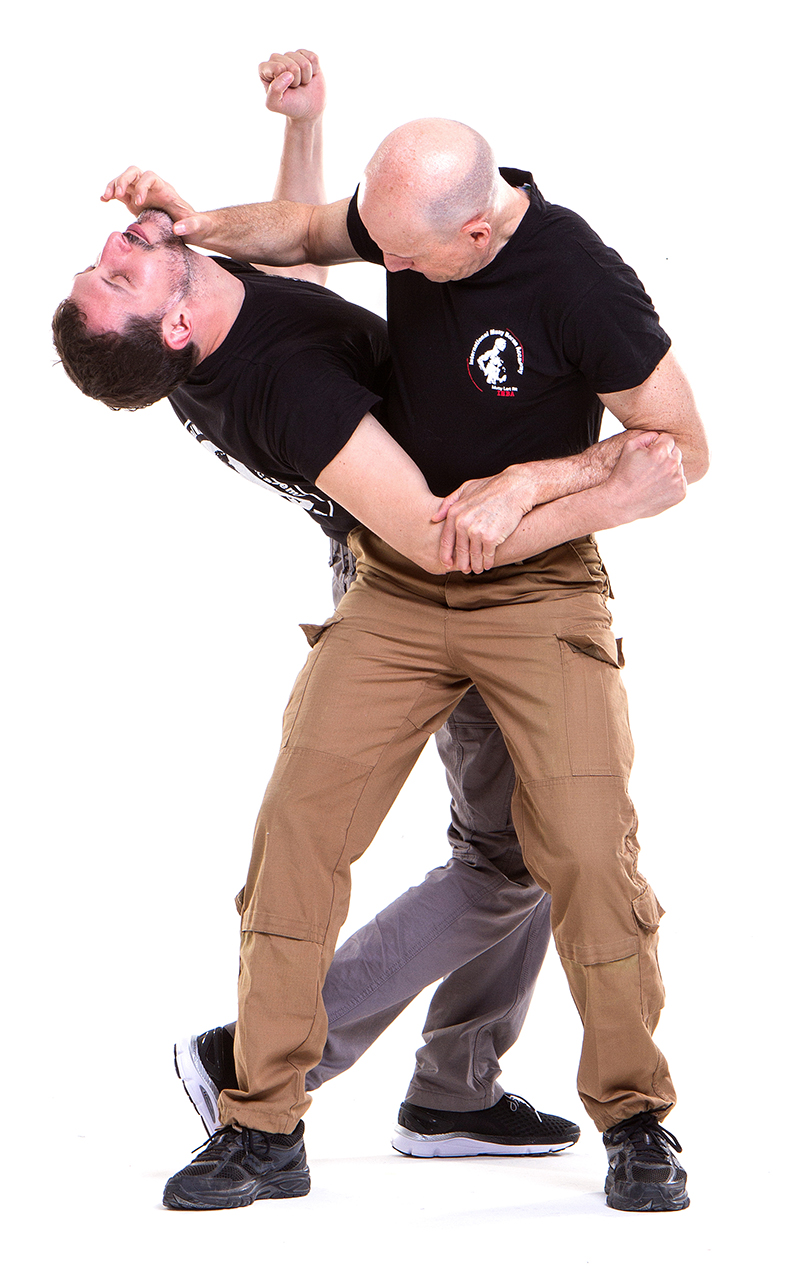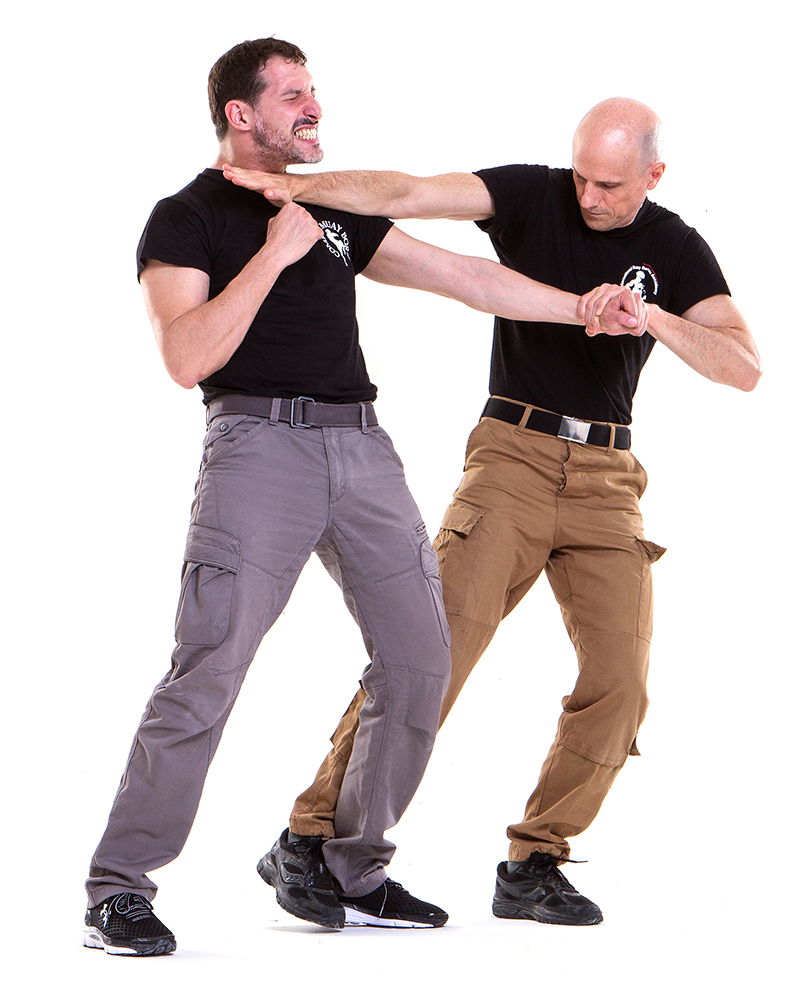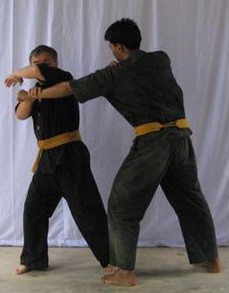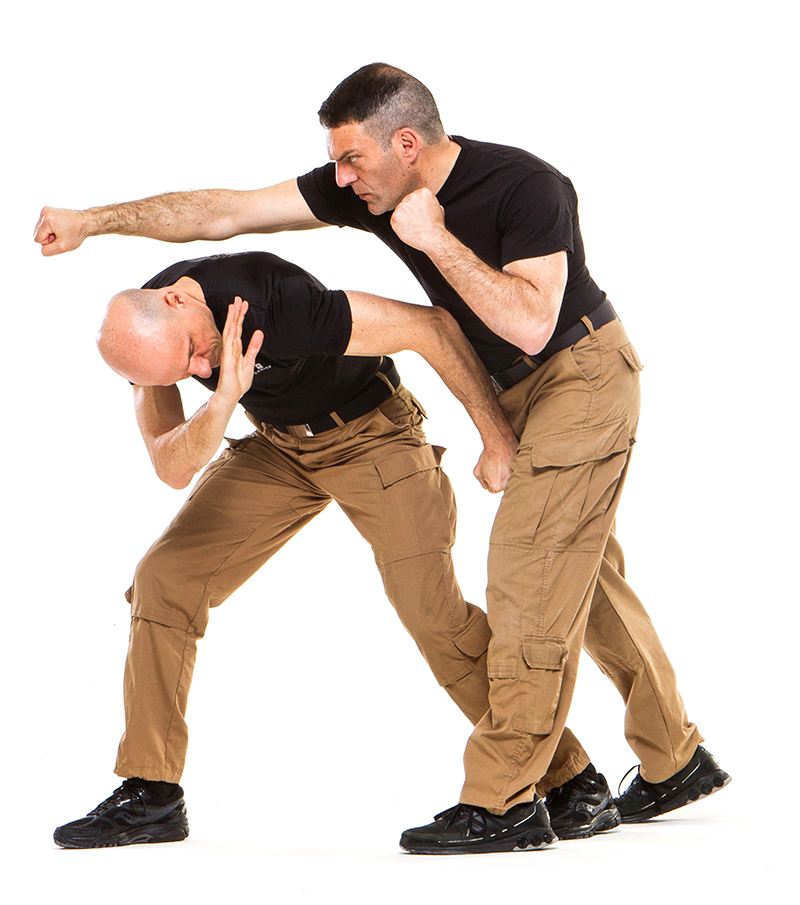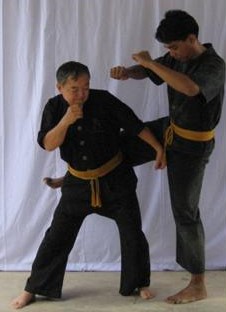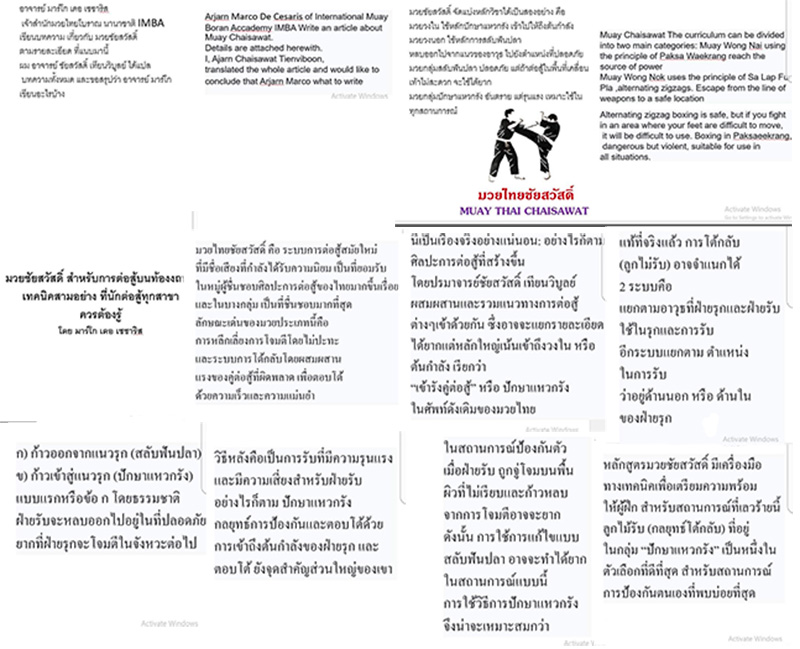
Muay Chaisawat for the street.
Three techniques every martial artist should know.
By Marco De Cesaris
Translation in Thai language by Grand Master Chaisawat Tienviboon
Muay Thai Chaisawat is a renowned modern-traditional combat system that is getting more and more recognition among thai martial arts enthusiasts. Some of the most distinct features of this style of Muay are its evasive approach against head-on attacks and its counterattack system based on blending with the offense in order to retaliate with speed and accuracy.
This is surely true: however, the combat Art created by Thai Grand Master Chaisawat Tienviboon is eclectic and includes approaches to fighting that may be considered extremely hard, too. In fact, a big branch of the defense and counter strategies of this style is focused on “getting into the opponent’s nest” or Paksa Waeg Rang in Muay Thai jargon. As a matter of fact, counter-attacks (Look Mai Rab) may be classified according to several coherent systems, i.e., the body weapon used by the opponent to attack, the body weapon used by the defender to counter-attack. Another system is based on the two main defensive approaches of Muay, that is to say:
A) stepping out of the line of attack (Salab Fan Pla)
B) stepping into the line of attack (Paksa Waeg Rang).
While the former is evasive by its nature and guarantees the defender is in a safe position in relation to possible multiple attacks, the latter approach is by definition more aggressive and somehow risky for the defender. Nonetheless, Paksa Waeg Rang defensive strategy guarantees direct access to the attacker’s centreline and consequently to most of his vital points. In a self defense situation, when the defender is taken by surprise on an uneven surface and stepping out of the attack may be difficult, becoming the aggressor is perhaps the only chance to survive.
Muay Chaisawat syllabus does include the technical tools to prepare its practitioners for this unfortunate situation. The Look Mai Rab (counter-attack strategies) belonging to the “Paksa Waeg Rang” group are amongst the best options for a serious study of the most common Self Defense situations. In my opinion, three Look Mai Muay Chaisawat are a must-have for all thai martial arts enthusiasts who are seriously interested in street fighting. These techniques fit perfectly in any reality-based self defence system for the following crucial reasons.
1.All of them are easy to apply in emergency situations because they do not require special athletic attributes (strenght, flexibility).
2.All of them are based on a strike as a first line of defense but nonetheless they can be easily combined with take downs or with series of blows.
3.All of them can be performed on all kinds of surfaces (asphalt, grass and so on), wearing every kind of clothing, with shoes on or with bare feet.
4.Moreover, the blows used as primary counter-attacks are executed with naturally strong body parts that do not require special conditioning to be effective.
Let’s analyse these three combat strategies in details.
1.Khun Yak Pa Nang
-Body weapon: heel of the hand
-Strategy: defense against punches and/or grabs
-Objective: throwing the opponent
This throwing technique is well known to all serious Muay Boran practitioners. In Muay Chaisawat this throw is executed by first stunning the opponent with an uppercut heel-of-the-hand blow (aka the Chin Jab in military Close Combat systems). This hand blow packs a lot of power and employs a part of the hand that is anatomically very resistant: bone alignment is crucial as well as the timing of the execution (see pictures). As the opponent steps aggressively forward and strikes (or attempts to grab the neck), waste no time and slide forward parrying his attack from the inside, stopping his forward momentum. The simultaneous heel of the hand blow to the chin will push his head upward and backward, thus breaking his balance towards the rear (and possibly damaging his neck vertebrae). Keep on pushing and stepping forward and, if you can, hook his back leg with your back leg (right leg with right leg) in order to totally break his balance. The consequent back throw will be hard: the opponent may knock the back of his head onto the floor with possible serious consequences.
2.Mai Rab Dui Hat Ta Kan
-Body weapon: hand sword
-Strategy: defence against punches, kicks, grabs
-Objective: attack the vital points of the head and neck
The outer side of the open hand is also known as hand sword. In traditional Thai Martial Arts it is used to attack and defend in a similar way to what it is done with a real sword blade. The small surface of this body weapon and its natural durability make it a perfect choice for self-defence situations. When it is used to attack the opponent head or trunk, there are two possible applications of the hand sword blow:
-Type 1: strike from the inside to the outside.
In this version, the strike is similar to a back swing punch (mahd wiang glab): the powerful back muscles come into play and the executor keeps a well-protected position in the preparation of the attack and in the actual striking maneuver. This is the preferred choice.
-Type 2: strike from the outside to the inside.
The dynamics of this type of blow is similar to a roundhouse punch (mahd wiang): it can be powerful but, if applied in the inner circle (like it is the case with Paksa Waeg Rang strategy) it exposes to a number of possible counterattacks.
When properly executed, the hand sword blow is one of the hardest hand strike a martial artist can throw. When this blow is used to counter a punch it is often used in connection with a wrist or arm grab that pins the opponent limb and stops him from moving out of range. If the hand sword blow targets the throat, side or back of the neck it can bring fatal consequences.
3.Thup Mak
-Body weapon: knuckles or side of the clenched fist
-Strategy: defense against punches, kicks, grabs
-Objective: attack the groin
Hitting the groin is one of the preferred tactics in all self-defence systems: the knees and feet are commonly used for this task and Muay Chaisawat has more than one special Mai Muay (technique of Muay) to be applied in that scenario. However, in the event of unfavourable conditions such as a slippery surface, a low punch may be better suited than a leg attack to accomplish that task. Muay Chaisawat has a specific tool that fits perfectly into that scenario: the low hand blow to the groin or Thup Mak is the answer.
There are two basic versions of this low punch:
-Type 1: up-swing punch that impacts with the knuckles.
In this version of the technique, the blow is a long uppercut executed with a powerful up-swing of the arm supported by a solid bent leg position that guarantees optimal stability in the execution of the hand strike. The knuckles are the impact surface on the target.
-Type 2: back-swing punch that impacts with the side or the back of the clenched fist.
Otherwise, the same technique can be executed with a backward up swing that uses the side of the clenched fist or the back of the hand as the impact zone. In this version, the back muscles play a fundamental role in giving power to the punch: in my opinion this is the best choice to apply this maneuver in most self defense scenarios.
When the opponent attacks with a head punch, a throat grab or a kick, waste no time and, lowering your center of gravity to be better rooted, step into the opponent’s centreline employing a powerful upward surge to swing your relaxed arm towards the opponent’s groin. If the punch connects with the genitals of the opponent he will be stunned and forced to bend over, thus exposing his head to further counterattacks with your elbows and knees.
Muay Thai Chaisawat: # smart Muay for smart people


